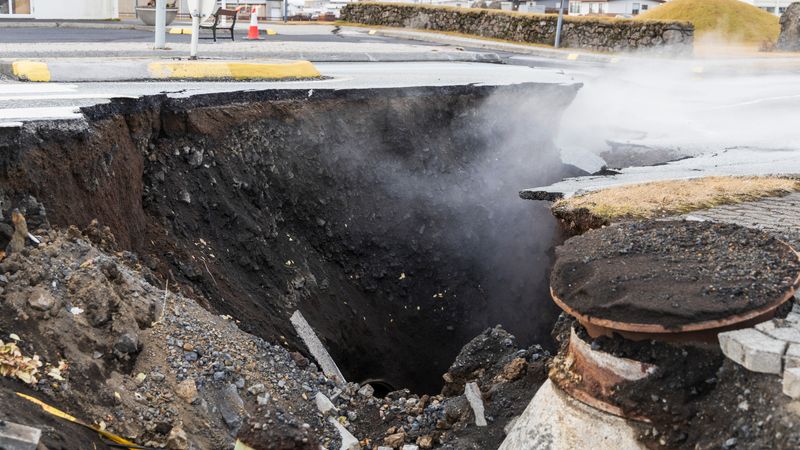- Thread starter
- #81
In layperson Jón Frimann's update today, he addresses something I had been wondering about but had not seen covered, since everyone understandably is focused on Grindavik and the dike there: what about the intrusion under Svartsengi that everyone was focused on until the dike formation began last Friday?
Jón's take:
There is other good information at that link; check it out.
Just another lay opinion (mine), phrased as a question: What if that inflow into the Svartsengi area built up enough force to break open that old fault on November 10th and 11th, but only relieved a little pressure? Could it break through somewhere else, perhaps along one of the old fissures Massimo mentions here (Italian: Twitter can translate it)?
This is where that recent article by Magnus Tumi comes in so handy, along with the graphic that shows the full extent of the area of concern:

Jón's take:
It took me a week. But it seems that this dyke intrusion under Grindavík town is because of the magma sill (dyke) under Svartsengi. That area has inflated around 110mm in a week. That is a inflation of 15mm/day based on my best calculations. That is a lot of inflation, since before 10. November the inflow of magma into Svartsengi was at most 8m3/sec according to measurements of Icelandic Met Office.
The sill in Svartsengi created a lateral dyke in Sundhnúkar and nearby areas. When the pressure in the sill is high enough again it is going to push the magma into the dyke at Sundhnúkar again with the same force as it did before. How long that takes I don’t know. Last time this was from 25. October to 10. November. That’s seventeen days, but there was a lot of deeper sills in Svartsengi and its impossible to know much, if anything flowed form them into the dyke. This is my personal view, it might be wrong. But this is what I am reading from the data.
There is other good information at that link; check it out.
Just another lay opinion (mine), phrased as a question: What if that inflow into the Svartsengi area built up enough force to break open that old fault on November 10th and 11th, but only relieved a little pressure? Could it break through somewhere else, perhaps along one of the old fissures Massimo mentions here (Italian: Twitter can translate it)?
This is where that recent article by Magnus Tumi comes in so handy, along with the graphic that shows the full extent of the area of concern:








